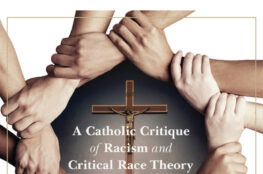Matthew Schmitz, literary editor at First Things, wants to ban pornography. Good for him. The problem, of course, is that it’s probably not going to happen anytime soon. Still, there is something to Schmitz’s argument which, unsurprisingly, is framed in largely utilitarian terms, perhaps because speaking of the divine and natural-law prohibitions on such garbage is not something the Washington Post (or its readers) is all that interested in. Fine. Schmitz wants to convince readers that pornography ought to be banned because it causes “social harm” without actually providing a working definition of what, in fact, constitutes a “social harm.” Granted, there is a healthy pile of research available linking pornography consumption to misogyny and violence against women, but so what? Why should any society be concerned with manufacturing an egalitarian view of the sexes? What is intrinsically wrong with one sex viewing the other as inferior and, from there, treating them so? Perhaps pornography feeds into that perception, or maybe it’s just a symptom of it. Either way, in a day and age where slaughtering babies and sending entire regions of the earth into political and moral chaos is commonplace, making pornography out to be a “social harm” that needed to be rectified yesterday is a hard, hard sell.
Now, lest anyone misunderstand what I am saying, let me be clear that I have no quarrel whatsoever with banning pornography — or a host of other forms of speech which have no place in a decent society. Late last year, over at Ethika Politika, I defended the practice of banning books while leaning heavily on St. Alphonsus’s moral theology. Moreover, when writing about the Charlie Hebdo murders, I (controversially) maintained that no man has a right to commit blasphemy. (For more on the fall-out over those comments, see this.) For what it’s worth, I am far more uncomfortable living in a society that allows — even encourages — God to be openly mocked, scorned, and belittled than one which has become so morally twisted that it cannot distinguish between obscenity and art. And might I go a bit further and say that there will always be something unsettling about a state which officially refuses to acknowledge the social rights of Christ the King and thus fails to conform its laws and regulations to His divine precepts.
As for Schmitz’s utilitarian case against pornography, it’s a mixed bag. While there is plenty of social-science research — and anecdotal evidence — to back up some of what Schmitz says, it stands to reason that there are plenty of individuals who “use porn” who do not develop any misogynistic tendencies nor have a disordered sex life (as judged by today’s lights). It is also quite possible to pitch a counter-case against Schmitz which, on the one hand, concedes that there are some types of pornography which ought to be banned (e.g., overt depictions of rape) while, on the other, holding that most other types are purely consensual in their depictions and therefore should be allowed. Then the question becomes, “Where do you draw the line?” Because legal jargon and judicial decisions are, more times than not, clumsy instruments of social control, it’s not terribly surprising that legal institutions have steadily steered clear of trying to define and enforce obscenity laws — something Schmitz wishes were enforced with greater vigor. The only way to avoid the difficulty of “marginal cases” is to be perfectly blunt what what should or should not be produced and displayed. St. Andrei Rublev’s icon of the Trinity? Yes. Sandro Botticelli’s The Birth of Venus? Absolutely not.



